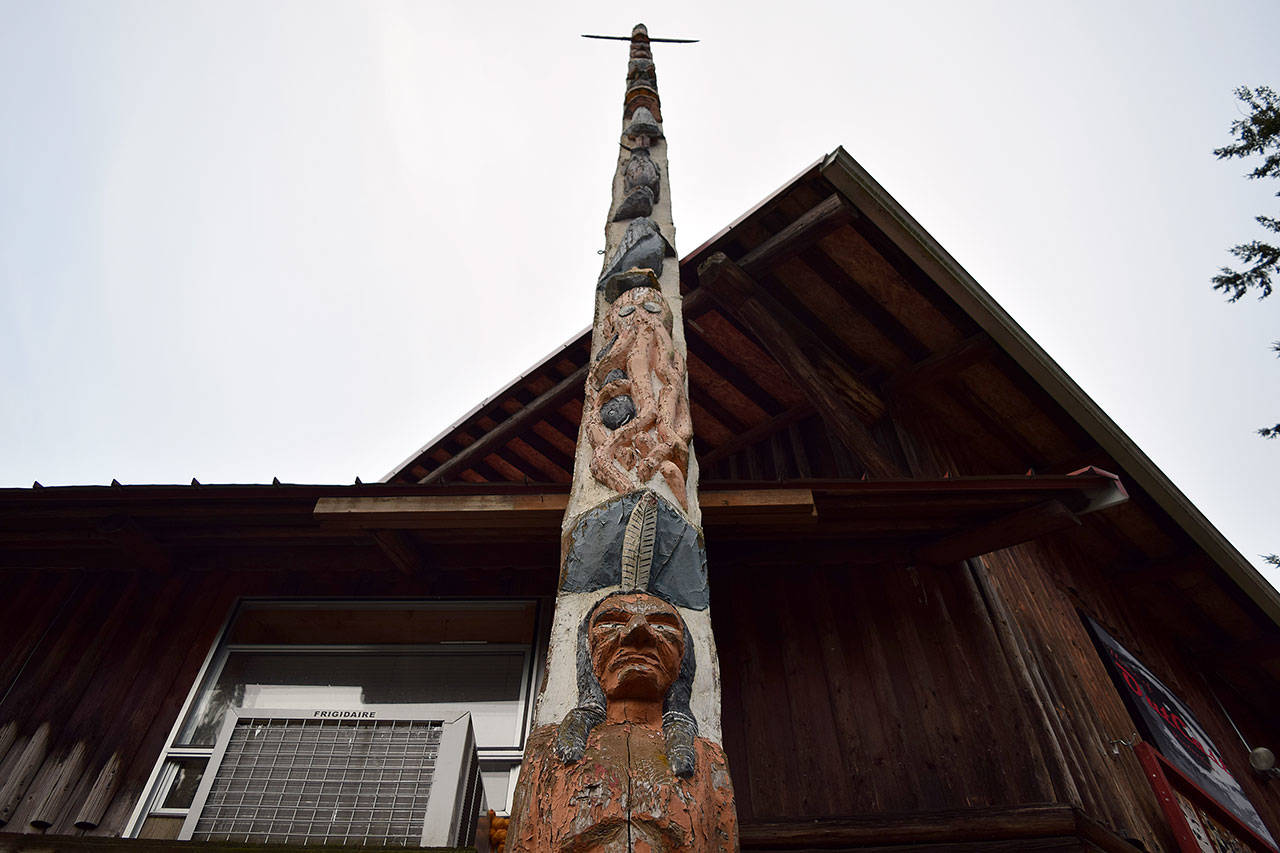For generations, the indigenous “story pole” has towered over the main entrance of the Whidbey Island Fairgrounds.
After years of aging and decreasing stability, plans to refurbish the pole are taking shape.
The pole was carved more than 80 years ago.
“The pole needs to come down because some people feel that during high winds it could fall,” Gary Gabelein, member of the fairgrounds advisory committee, said. “It’s rotting at the bottom of the pole. It’s either 46 or 49 feet tall, so it’ll be tricky to take down.”
The fairgrounds advisory committee is the organization overseeing the fairgrounds in the early years of Port of South Whidbey ownership.
Renovation plans for the story pole, which differs from a totem pole in that they tell a story, were announced at the monthly port district commissioner’s meeting this past week.
Plans to refurbish the pole have been ongoing since June 2016, according to South Whidbey Historical Society President Bill Haroldson.
It’s still early days for the plans, however, and much is still to be figured out.
According to Gabelein and Angi Mozer, executive director of the port district, it’s a project that requires much coordination.
“We have to work with a few different organizations to make this happen, but when the conversation began, I thought it was a great idea,” Mozer said at the meeting.
The task requires collaboration between the port district, which owns the fairgrounds property, fair administration, the advisory committee and the Tulalip Tribes. Master carvers from the tribe have to work on the story pole, and representatives from the port and the fairgrounds have to find a location to work on the pole. Gabelein estimates it’ll take two to three years to restore.
While a location isn’t set in stone, the advisory committee is recommending the on-site antique barn as a renovation space. If that happens, the antique barn’s contents would need to be reorganized to make room.
Those on the committee, as well as the historical society, hope to use it as an active educational exhibit as tribal carvers work to restore the pole. However, they need to finalize a place to renovate it with representatives from the Tulalip Tribes.
“If they get it in the barn, some people want to invite groups or classes to come see it while it’s being restored,” Gabelein said. “It’s quite a project, and there’s a lot of historic and educational value.”
The story pole was carved by master carver and Tulalip cultural leader William Shelton, who died in 1938. Shelton, who was born in the Langley’s Sandy Point area, was the last hereditary chief of the Snohomish. According to Haroldson, Shelton carved story poles as a way to bring the gap between indigenous America and white America. Very few of Shelton’s historic story poles remain; one stood on the grounds of the state capitol before being removed in 2010 because of safety concerns.
Tulalip Tribe representatives confirmed the story pole was made by Shelton this summer.
The pole currently leans on the fairgrounds administration building near the main entrance on Camano Avenue. Metal plates are in place at the bottom of the pole to help keep it from falling, as the bottom is experiencing dry rot.


